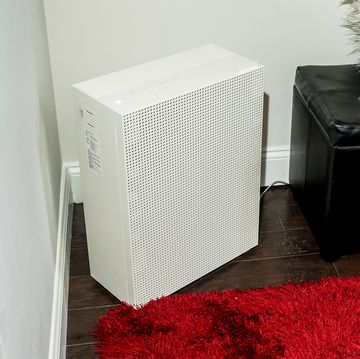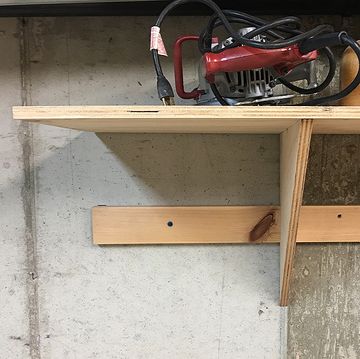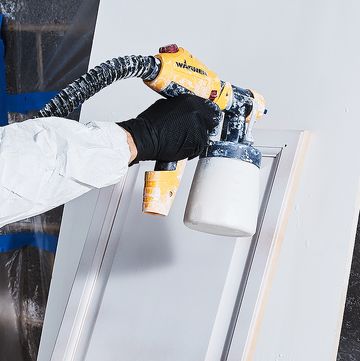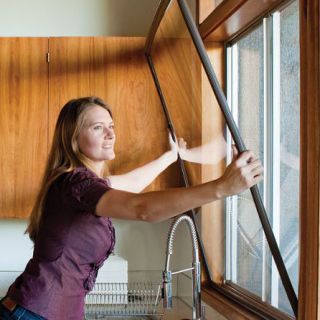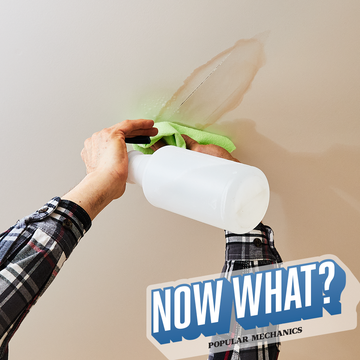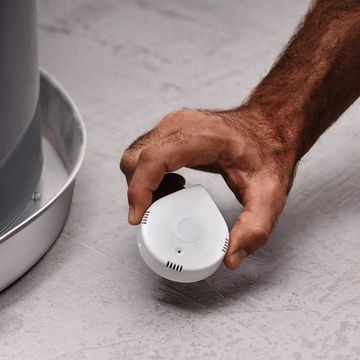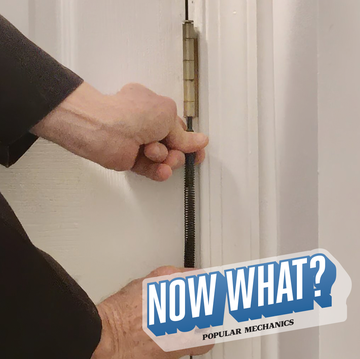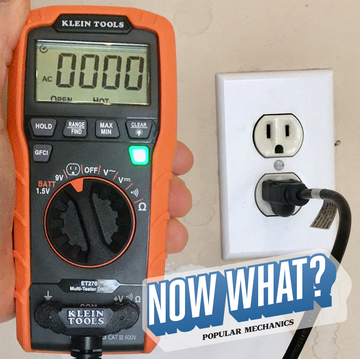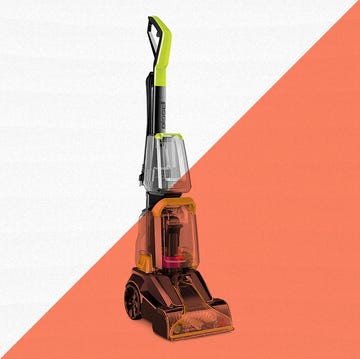There are few home improvement tasks greeted with more dread than finishing drywall. If you're like most people, you hope that you've already done your last finishing job. Unfortunately, if you enjoy working on your home, you are bound to be confronted by this task again. So it's worth your while to check out the tips and techniques we discuss here.
Before You Begin
The selection of tools we show here are not the only ones that work. Some people prefer wider drywall knives. Regardless of your preference, be sure that all the knife blades are very flexible. Holding the handle and the blade, you should be able to easily flex the blade between your thumbs.
Your selection of compound is just as important as your selection of tools. Compound is available in two types. One is called a setting compound and cures by a chemical reaction. The other is a drying compound that hardens through evaporation. The latter is available in a powder or ready-mixed version, but for most people the ready-mixed product is far more convenient. This is what we used.
You also have a choice when it comes to joint tape, between paper tape and self-sticking fiberglass mesh tape. The great advantage of the fiberglass tape is that it eliminates the need for the first coat of compound--and that's a big deal. But tape manufacturers say the fiberglass product should be used only with setting compounds, not with drying ones. In our opinion, the difficulties of working with a setting compound outweigh the advantage of using the fiberglass tape.
One last tip: If you buy your taping compound in 5-gal. pails, which is what we did, be sure to buy an opening tool. It costs about $3; opening these pails without one is very frustrating.
What You'll Need
Tools: 5-, 8- and 10-in. flexible drywall-taping knives, joint compound pan, bucket-opening tool, electric drill, mixing paddle, respirator
Materials: Premixed all-purpose joint compound, paper joint tape, 180- or 220-grit sandpaper, drywall screws, corner bead
Getting Started
There are probably as many approaches to the finishing process as there are finishers. But a few rules of thumb are appropriate for beginners. First, always keep your knives as clean as possible. This means wiping off the excess compound on the edge of the pan after each pass with the knife. Second, never mix dried compound into fresh compound. Even the smallest piece of dried debris will leave a messy gouge in the finished surface. If dried compound does find its way into your pan or pail, remove it immediately. Finally, remember that the surface of the compound will only be as smooth as the stroke you use to apply it. As you begin applying compound, make a concerted effort to lengthen your strokes. Keep the knife aligned with the direction of the joint. Until you get the knack, compound will certainly squeeze off the knife and fall to the floor. But by loading the knife with less compound, you can minimize the mess.
Begin the job by working on the butt joints (joints that occur on the ends of the drywall sheets). Follow this by working the tapered joints (those along the edges). Last, do the inside and then the outside corners. Keep in mind that the inside corners have to be done in two steps, because you can work on only one side of the joint at a time. If you try to finish both sides at once, your knife will foul the first side while you work on the second side of the corner.
Butt and Tapered Joints
Begin work by mixing the joint compound (1). Although this isn't absolutely necessary with ready-mixed compounds, it does smooth out the compound and make it easier to apply. Starting at a butt joint, load up a 5-in. knife, making sure its corners are free of compound (2), and apply the compound starting at one end of the joint (3). Work as smoothly as you can, reloading the knife when you run out.
Then, clean off the knife on the side of the pan and smooth the entire joint in one stroke. Don't press so hard that you remove all of the compound. If you scrape the surface clean in an area, reapply compound, because the paper tape won't stick to the paper-covered drywall without compound. Once the compound is smooth, cut a piece of joint tape to length and embed it in the compound using your fingers (4). Align the middle of the tape directly over the middle of the butt joint.
With a 5-in. knife, smooth the tape into the compound and wipe off any excess that squeezes out. As you do this, the tape will be covered by a very thin layer of compound. After a little practice, you should be able to get a relatively smooth surface with the tape straight and flat.
Once the tape is in place and smoothed, cover the entire joint with more compound, this time using an 8-in. knife (5). Use the same techniques described for the 5-in. knife. Note that some drywall installers find it easier to let the joint compound dry overnight at this stage, before applying the second coat with the 8-in. knife.
After the butt joints are taped smooth, move on to the tapered joints. These joints are easier to finish because there's a depression formed into the long edges of the drywall panels. First, fill the joint with compound using a 5-in. knife (6).
Then, embed the tape with your fingers (7) and smooth it into place with the 5-in. knife. Last, finish up the first coat by applying compound with an 8-in. knife (8). Cover the fastener heads with a wide stripe of compound (9), and scrape off the excess.
Certainly one of the most difficult joints is a ceiling butt joint. In the first place, you are working over your head, which is always awkward. And second, because the butt joint has no tapered edges to hold the compound, a lot of it is liable to fall on the floor--and you--as you work. To start such a joint, load your knife as before and press it against the ceiling. Slowly move along the joint with a smooth stroke, progressively flattening the knife as you move (10). This will help prevent compound from falling and will yield a smoother surface.
Corner Joints
To start an inside joint, first load a 5-in. knife on one corner only (11) and then apply the compound to one wall with a smooth, steady stroke (12). By working in this fashion, you will limit the compound that squeezes out.
Then, load the other corner of the knife and coat the other side of the joint (13). You are bound to foul the first side when you coat the second, but try to avoid this as much as possible.
Next, cut a piece of tape to length and fold it down the middle (14). Carefully push the tape into the joint with your fingers (15). Make sure that the fold in the paper lines up with the corner of the joint. Embed the tape on one side of the joint at a time using a 5-in. knife (16). Don't bear down hard. Maintain steady, even pressure on the knife and do your best to keep the surface smooth. Once the excess compound has been removed from both sides, apply a topcoat to one side of the joint using an 8-in. knife.
The inside corners along the ceiling are finished in the same way. When those are complete, move on to any outside wall corners. The first step in finishing these is to attach metal corner bead to the joint with drywall screws or nails (17). Then, using an 8-in. knife, fill the area over the corner bead with compound (18). Work on one side of the corner first and then finish the other.
At this point, you should return to complete the other side of all the inside corners, and then you'll be done with your first coat of compound. Once everything is dry, scrape off any ridges or chunks of dried compound with your 5-in. knife. Then, use a 10-in. knife to apply a second coat of compound. Follow the same joint sequence you used for the first coat.
Repeat the whole process for the third coat, using the 10-in. knife, and when this coat is dry, sand the surface with 180- or 220-grit paper. Be sure to wear a respirator, not just a dust mask, and goggles when sanding.




